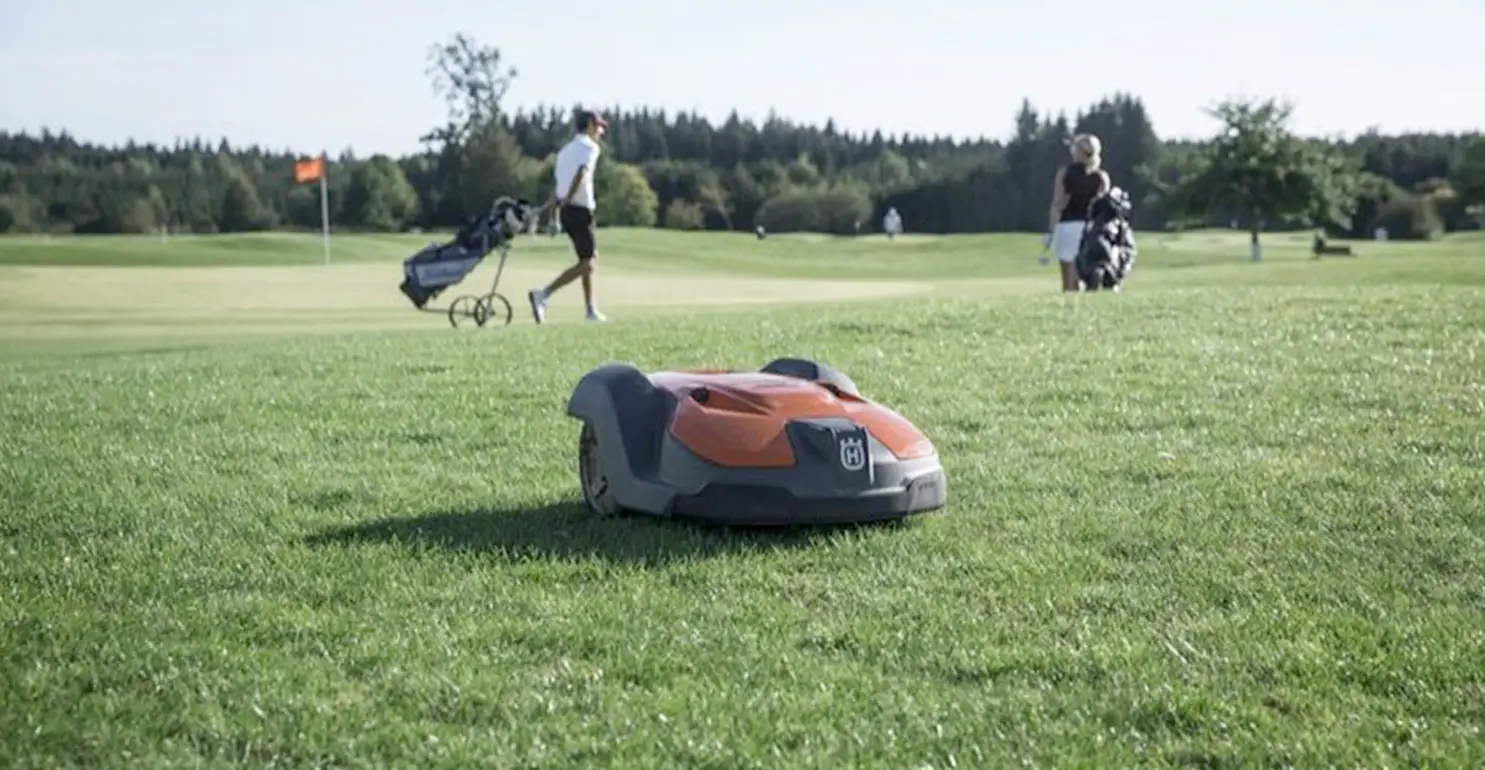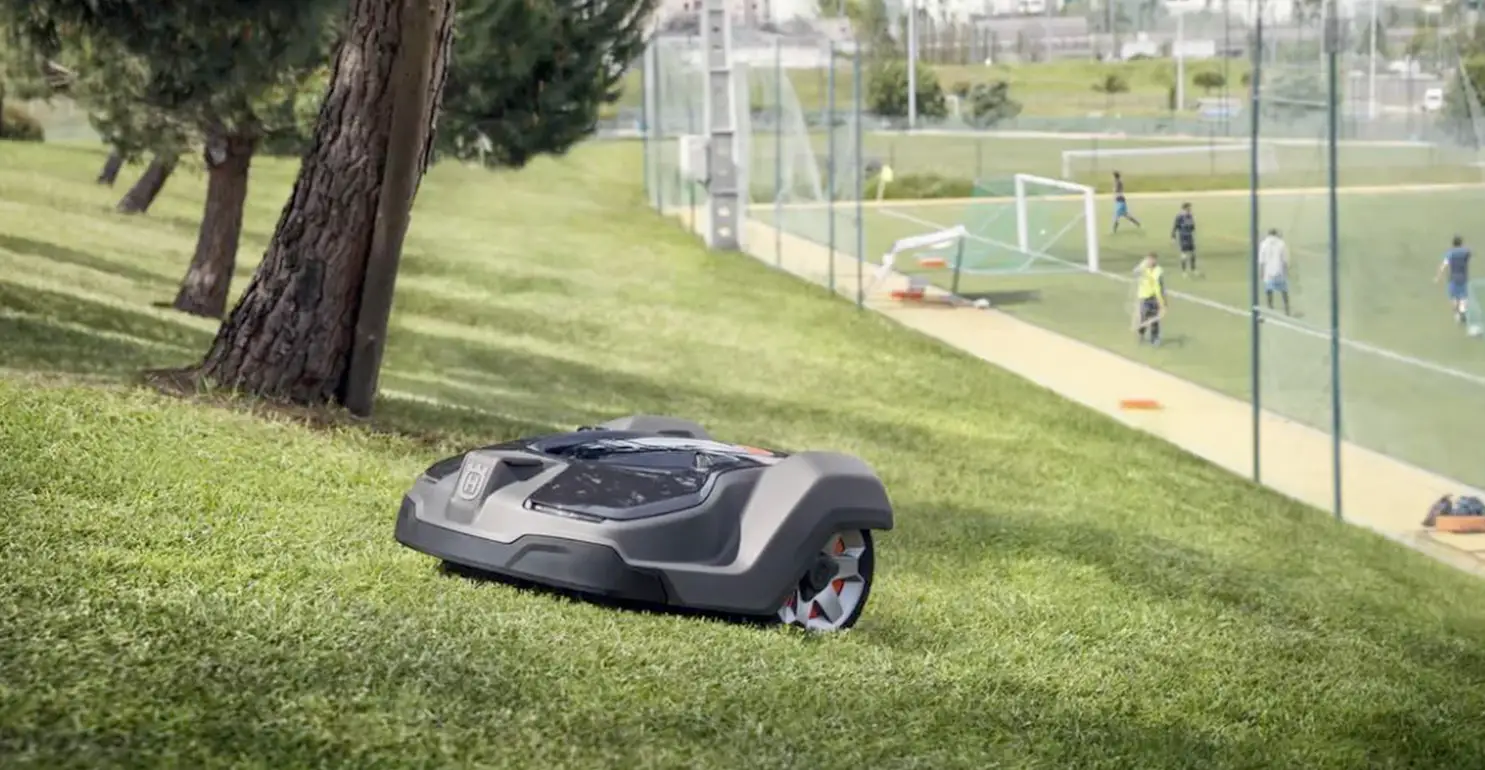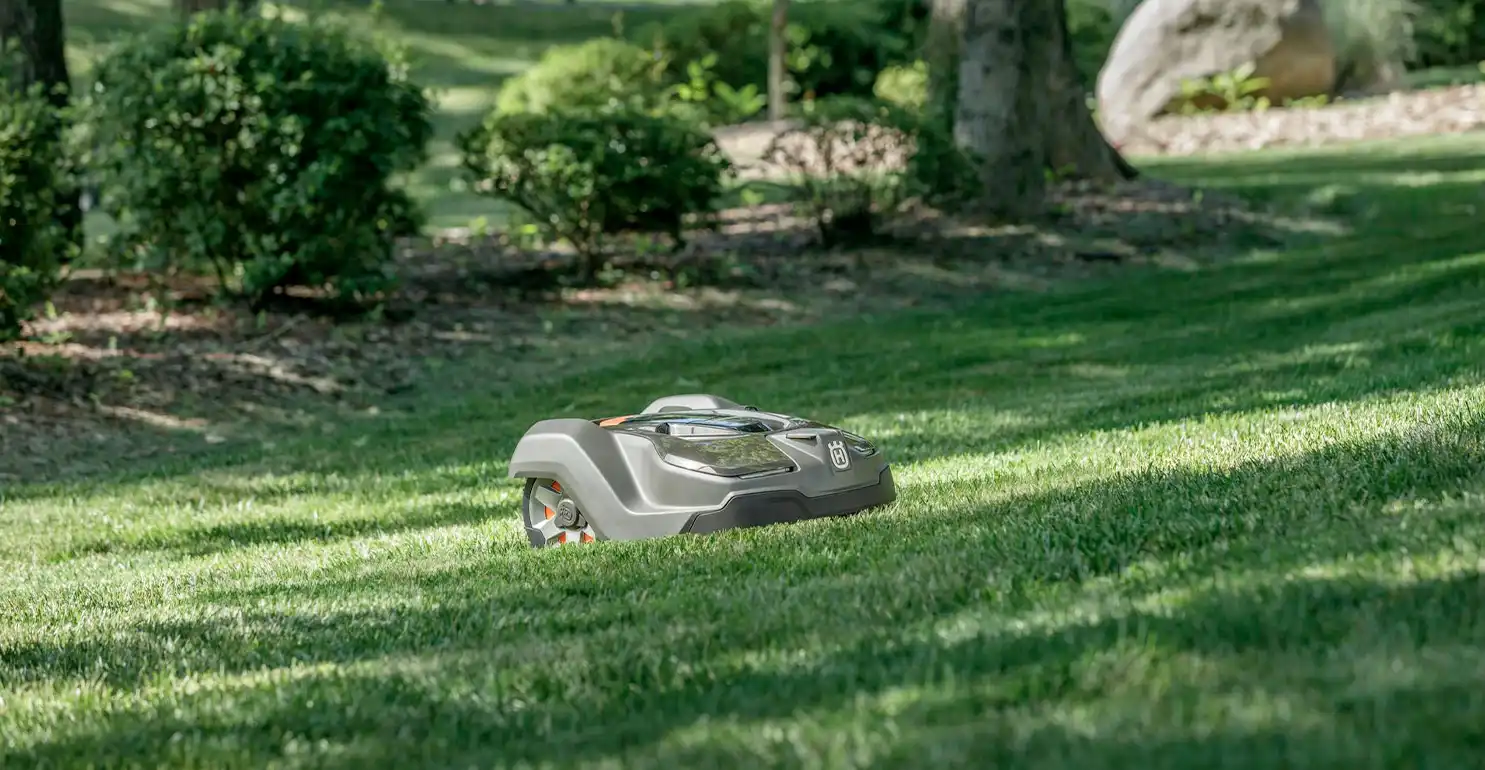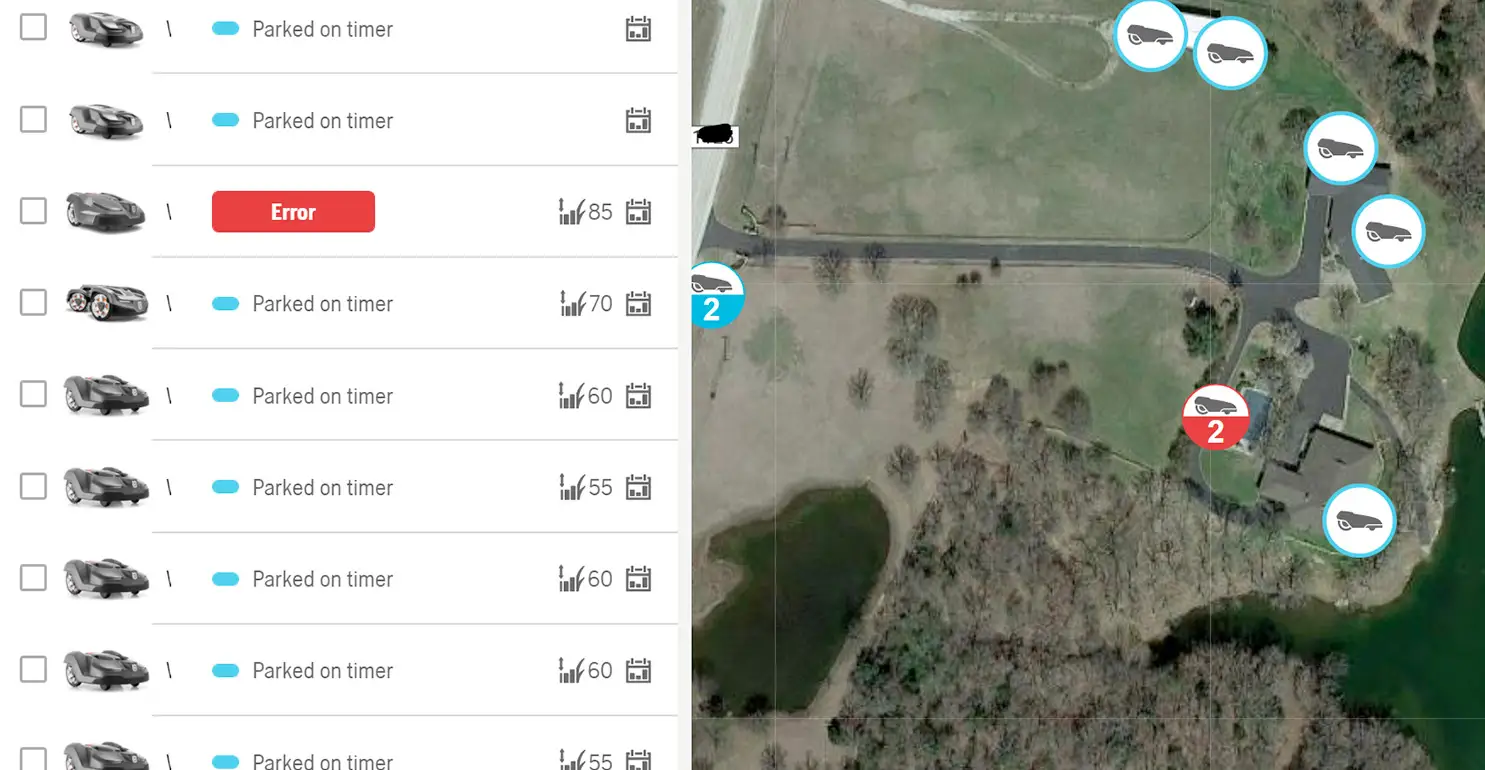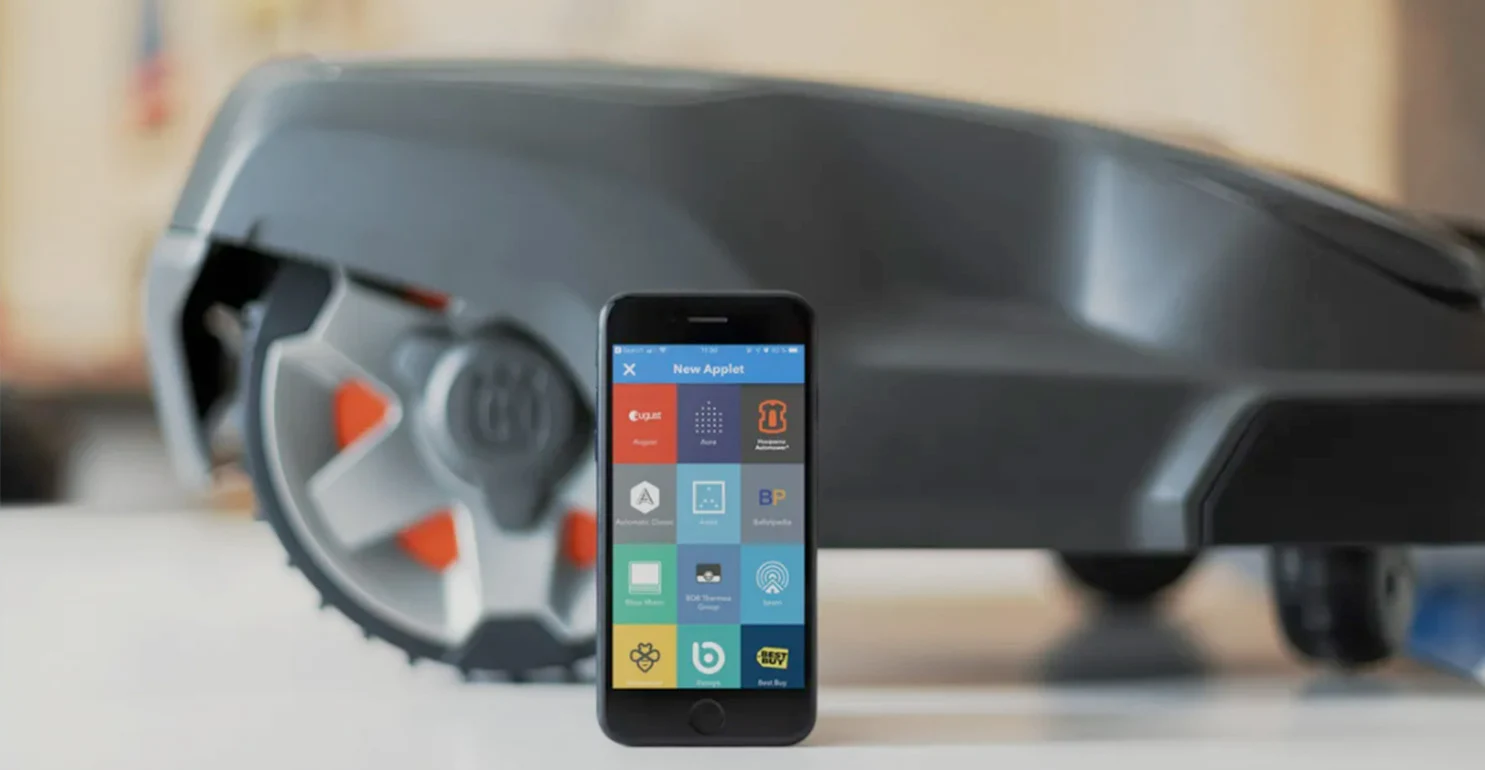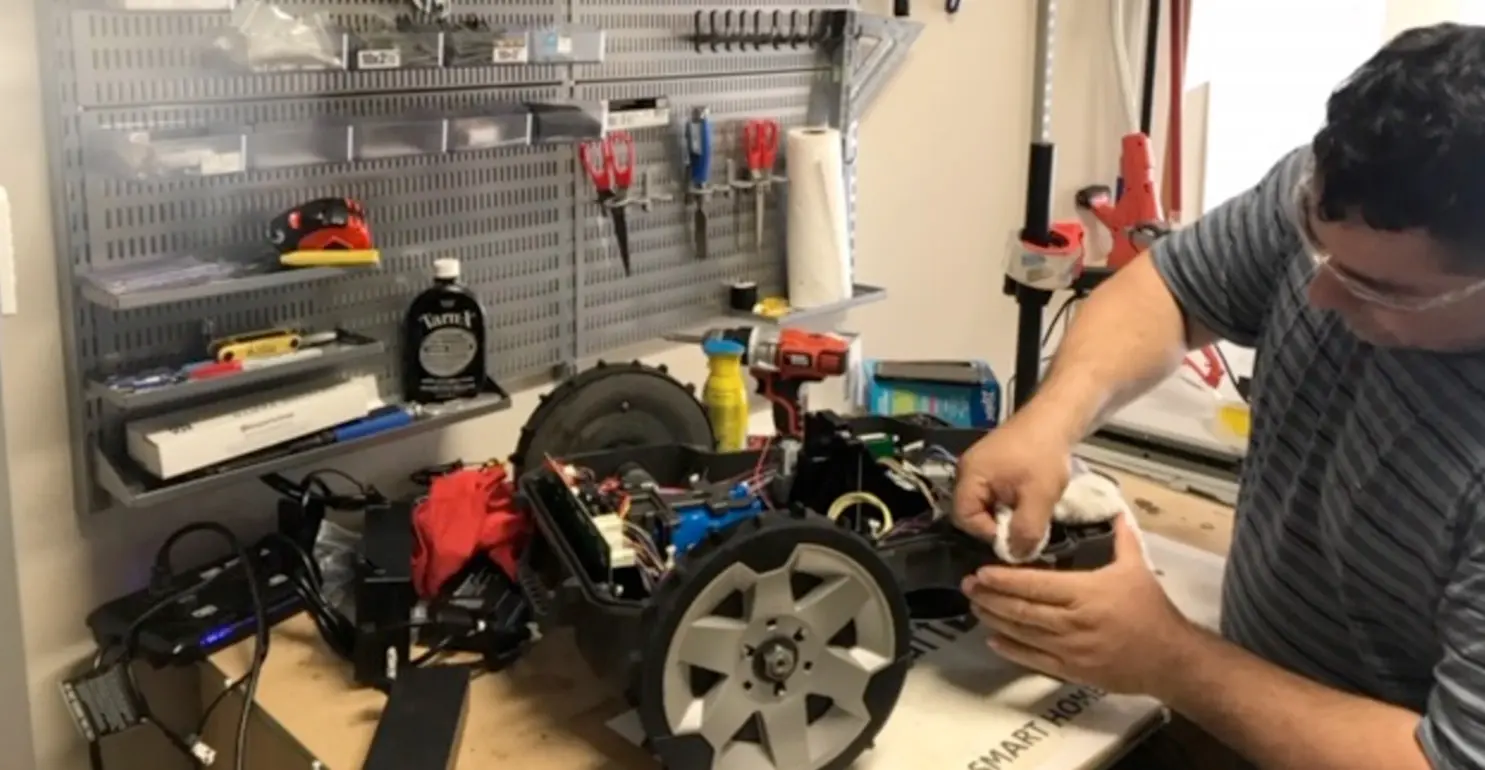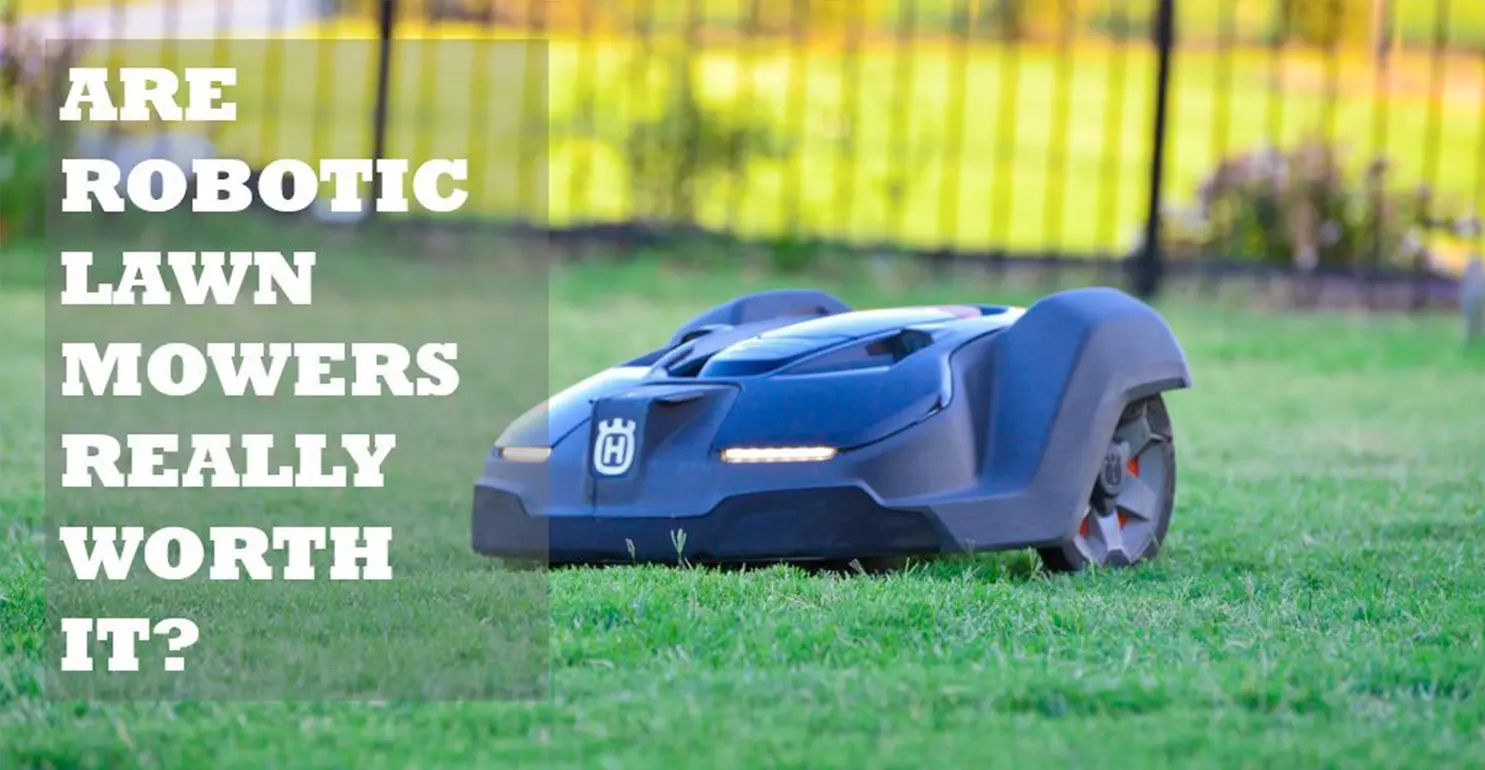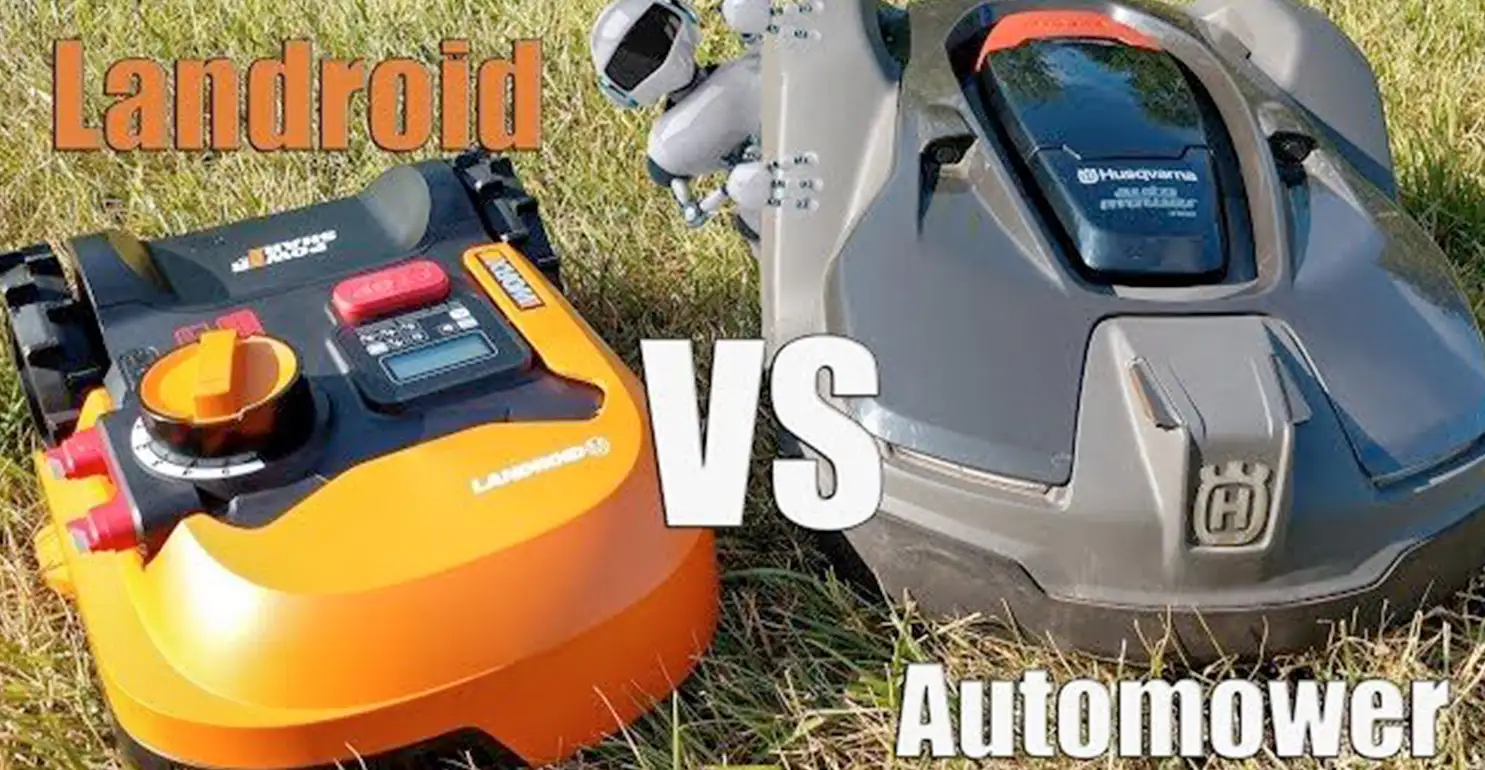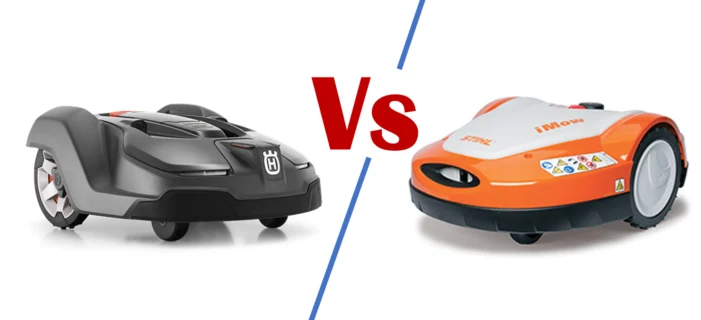This year’s Equip Expo (formally GIE) was held like every other year at the Kentucky Exposition Center (KEC) in Louisville, Kentucky. SmartDots was present at the expo primarily to understand the robotic mower market, new players in the segment, go-to-market strategies etc. It was a great show and a treat especially for landscapers who are looking for new tools, technologies and machines to make their businesses more efficient and profitable. It also gave us an insight into the future of mowing, which was dictated merely by the wide presence within the robotic mowing segment this year. The number of companies that showcased robotic solutions grew by multiple folds compared to last year and it seemed like this may be the norm that will get established in the next decade or so.
In this blog article, we will discuss the different robotic mowing technologies that were showcased, highlight some of the companies that showcased their robotic mowers and provide our take on each one of these technologies. So let’s get started…
Listed below are at a high level, the technologies that we saw being leveraged in robotic mowing segment.
- Wire Based
- Wire Free – RTK Reference Station Based with LoS correction
- Wire Free – 3rd Party RTK Network with internet based correction
- Wire Free – Hybrid RTK network with internet based correction
- Wire Free – Cameras, Sensors & AI Based Mowers
We will also discuss briefly the commercial and residential variations we observed within each one of these technologies.
- Wire Based Robotic Mowers
Wire based robotic mowers have been in the market ever since Husqvarna introduced their first robotic mower in 1995. Since then many players have introduced mowers using the wire-based technology, where a perimeter wire is installed for the property, and the base of the mower which also is used to charge the mower transmits a signal over this perimeter wire. The mower uses this signal to determine its boundaries and mows within the polygon created by the perimeter wire. Companies like Husqvarna have introduced additional patented improvements to this basic concept such as use of guide wires that enable the mower to find its way back to the charging station during low battery, as well as to determine various starting locations for mowing. Other technologies like collision sensors, lift sensors, GPS, 4G Cellular modem etc are used to make the mower functional, more accurate and secure.
While wire based systems are the most reliable, they also can be costly to install, high maintenance and least flexible, in terms of changing the mowing area.
The predominant presence in this space was seen from manufacturers like Husqvarna and Ambrogio. While Husqvarna was presenting other technologies too, Ambrogio did not showcase any other robotic mowing technology, other than wire based robots. Ambrogio however offered multiple variations to their robots, with different sizes, colors, capabilities, capacities etc, which can really help in designing very complex gardens with multiple mowers. Ambrogio’s build quality and soft wheels were other two things that distinguished them from someone like Husqvarna. Both Husqvarna and Ambrogio offer a range of models that are suited for residential as well as commercial use. Ambrogio robots use a fixed cutting system, rather than a pivoting system like Husqvarna. This could mean that the blades will last longer, but it can also mean that if you have any objects in the garden like toys, branches, rocks etc, the mower cutting assembly and the object will endure a lot of strain.

Without seeing Ambrogio robots in action and without any experience with them, we cannot pick one over the other, but considering some basic aspects such as ease of set up, cutting system design and technologies used, we still prefer the Husqvarna Automowers. Our opinion may change in the future, who knows!
Echo Robotics on the other hand showcased their huge commercial models that still use wire. They offer two models TM-2000 and TM-1000. While the mowers also have option of adding RTK reference station based system (RTK systems explained below), they still require a wire to be installed for their operation. This is mainly to account for GPS drift, which is an important issue that cannot be controlled easily in RTK systems. With a wire, it is certain that the robot stays in its working area. The wire also enables the mowers to operate in areas where GPS signal may not be available to work reliably (Ex: Under Trees, next to tall structures etc). The range of coverage for these mowers can vary based on the mode in which it is being used. The surface maintained by the TM-2000 is up to 6 acres in “random mode” but up to 12-15 with the RTK version. As for the TM-1000, it can maintain up to 3 acres in random mode and 7 acres in systematic pattern mode (RTK based). These mowers have a 5 disc cutting system to offer a wide cutting deck width and have floating cutting heads with pivoting blades, which makes them suitable for golf courses. We felt that the CEORA mowers from Husqvarna (covered below) offer more value to customers from an over all design, range and performance standpoint as well as from a regular maintenance and management perspective.

2. Wire Free – RTK Reference Station Based with LoS correction
Let’s first understand what does RTK mean and how the technology works. Cell phone grade GPS provides an accuracy of a couple of meters at the best, using the GNSS (Global Navigation Satellite System) satellite network. This level of accuracy is not practical to use for positioning the robotic mower within a garden or lawn. This is where the RTK technology comes in. RTK stands for “Real Time Kinematic”. RTK Systems use a fixed base station or reference station which is used by the mower to correct its location within accuracy of a few centimeters. The system consists of a base station which needs to have a line of sight (LoS) with the mower. The mower communicates back and forth with the base station to get position corrections and maintains its accuracy close to a few centimeters.

The base station re-broadcasts the phase of the carrier that it observes (from GNSS), and the mowers compare their own phase measurements with the one received from the base station. There are several ways to transmit a correction signal from base station to mobile station. The LoS option generally uses a UHF frequency which generally requires the mower to be within line of sight of the base station in order to receive corrections. This allows the mowers to calculate their relative position to within centimeters, although their absolute position is accurate only to the same accuracy as the computed position of the base station. [Source: Wikipedia]
While this technology is very promising and is being leveraged by many robotic mower manufacturers, it has its own challenges. The set up costs are higher due to addition of the reference station. Secondly, the unit still relies on getting a signal from the satellites, to which corrections are made. Factors such as cloudy skies, area with many tall buildings, under the canopy of a tree, close to high walls etc, can cause the mower to not get a signal from the GNSS network, which can stall the mower. This is also known to be a problem in the northern hemisphere of the earth, as fewer satellites are visible at a given point the higher up north one travels.
While it has its challenges, the technology has been proven to work pretty well, especially in commercial set up where large open spaces are mowed using robotic mowers. On the residential spectrum, mowers with this technology is yet to release, but announcements have already been made.
During the GIE Expo, we observed multiple providers leveraging the LoS based RTK Technology. Husqvarna for example introduced their EPOS platform (based on LoS based RTK GNSS system) couple of years ago and it is used widely for commercial customers. As solution providers ourselves, SmartDots has deployed EPOS systems for our customers and we know that it works as long as it is installed to work within its operational limits. Husqvarna also announced EPOS technology for residential users which is expected to release sometime in 2023. A EPOS based 450X mower was showcased at the expo, which looked just like the 550 EPOS (commercial version), but in the Automower’s residential grey color. It is expected that due to its LoS limitation, the reference station will require additional repeaters for the technology to work in a typical residential garden. The cost of the base station and repeaters can be anywhere between $400-$800 and the mower can cost close to $5000. Depending on complexity of the garden, tree cover, tall buildings etc, the feasibility and cost may need to be weighed and assessed. This is where someone like SmartDots can help the customer determine the right robotic mowing solution for their yard and guide them towards success. Husqvarna also leverages its EPOS technology with the CEORA commercial mower that is designed to mow anywhere from 5-15 acres. While, CEORA looks promising it still needs to be tested in the real world and it needs to be determined whether commercial customers prefer having a dedicated mower per area or they prefer a robotic mower that they can cycle through different areas and locations as and when needed. The answer may be “both”, and a well balanced solution is therefore going to be key to success.


One other manufacturer that leveraged the same RTK LoS technology was Mammotion. The Shenzhen, China-based company’s core team consists of members who are highly experienced in the robotic industry, including mechanical control, robotic chassis, sensor fusion, and autonomous driving algorithm technology. Luba is their first take on a robotic mower and the mower is infused with technology. The build quality seems very solid and the mower is an all wheel drive machine that can handle slopes up to 75% (or ~35-36 degrees). It looks like a race car and also has 4 ultrasonic sensors in the front and a detachable bumper that helps it detect collisions. The mower has bump sensors on both sides as well and is quite heavy (~ 50-60 lbs) for a robotic mower. The mower comes in a box with a charging base, a reference station, mounting pole for the reference station, cables and power supply unit. The reference station is powered from the charging base and does not require a separate power supply.
Mammotion is also working on a large commercial version of robotic mower which they plan on launching next year. It was on display at the Expo and looked like a mini golf cart.

Just like any other RTK based mower, due to its accuracy in positioning, Luba can also mow in straight lines, enabling it to finish a full lawn much faster. The mower has 2 cutting discs with 4 blades each, providing it a much wider cutting width than some of the other mowers. When inquired, the representatives at the booth suggested that the price point is expected to be around $3000-$4000, which was still not a final number. While the price point seems attractive for an all inclusive RTK based system, the question still remains whether a LoS system like this can work for a residential user who has to mow a front yard, back yard and both side yards. Luba will also offer an extension kit, in case additional reference stations are required in a residential set up which are more complex. We’ll know when more of these machines are put in the real world to test.

3. Wire Free – 3rd Party RTK Network with internet based correction
Another way of sending correction signals to the mower from the reference station is through the internet, or cellular 4G network. The way this works is that there are 3rd party providers of RTK network who have a network of RTK antennas installed in various locations (like cell phone towers) and they lease out these to companies that are seeking accurate location services. The protocol used to send and receive this correction data is called as NTRIP. In this set up, the RTK enabled devices have a what’s called NTRIP Client on board which is basically just a gateway between the GPS receiver and the NTRIP caster. RTK network providers such as TOPCON offer various plans to avail their network and services. They have pricing structure that can vary based on business needs.

Clearly, in this set up, there will be an ongoing cost to use the existing RTK network as well as the cellular network for continuius data transfer. It completely depends on the robotic mower provider whether they want to absorb this cost by increasing the cost of the mower or keep the mower cost low, and extend the monthly subscription costs to the end user. Some of the manufacturers we met at the Expo are extending this cost to the end users on the commercial side and are charging anywhere between $1500-$2000 a year, which includes cost of leasing the RTK network as well as LTE network for internet connection. There were also manufacturers who are willing to absorb the cost and recoup their costs in innovative ways. It will be interesting to see how this plays out as more and more companies start leveraging these RTK networks. Availability of these networks in remote areas may be a challenge to consider as well.
NextMow was one such manufacturer who showcased their robotic mowers that work on the RTK system and leverage existing RTK network. Their primary use case was to target commercial users like landscapers, municipalities etc. As a result, these mowers do not come with a charging station but have a hot swappable battery. The battery was pretty large and could sustain long hours of operation while supporting line mowing (like any RTK based mower). Their catch phrase was “Drop, Mow & Go”, indicating that landscapers can map out properties and drop these mowers for mowing the properties (multiple mowers can be used in a single work area as well). While the mowers are mowing, the landscapers can use the time to work on other skilled tasks such as bed maintenance, edging, trimming, blowing, tree maintenance etc. The mower comes with typical safety sensors such as ultrasonic sensors, bump sensors, lift sensors etc. It also has a camera in the front that sends the user a picture of the lawn once it completes its mowing cycle. The cutting system has a single disc with 5 pivoting blades. The mower seems good, however, we have to see how their commercial structure is going to work out. Their pricing structure seemed a bit on the higher side, but these are new business models that are being tried and may eventually get tweaked based on market feedback. We did see the mowers in action at the Equip Expo and they were doing a pretty decent job of mowing. It will be interesting to see how these machines work as mow areas get complex.


Other than this we also came across some other interesting commercial models of robotic mowers that were showcased at the Expo. Another commercial model was a robotic mower that was designed like a ride on mower (with a seat) – The idea was that the landscaping companies have their landscaper technician sit on the mower and ride it to map the property. Once the property outline, they press a button and the mower starts mowing within the polygon, while the landscaper can work on other things. An image of one such mower from RCM Robotics is shown below.

We also came across another business model where these mowers were not sold by the manufacturers, instead they were leased out to commercial landscapers. This was designed to help the upfront capital requirement to be kept minimal for the landscaper. Scythe was a provider that leveraged this model and used the same 3rd party RTK network to provide precision mapping. The company leasing these mowers would be responsible for regular maintenance like tires, blades, cleaning etc, while the manufacturer would ensure that the mower stays up to date with technology.
4. Wire Free – Hybrid RTK network with internet based correction
This particular category was applicable to one specific new entrant due to the way they have their deployment planned. The company is a Germany based technology company named Kress that started making robotic mowers a little over 3 years ago. Their presence is growing within Europe and while they offer wired and wireless solutions in the Europe, their strategy is to only being the wireless solution to the US. Like any other wire free solution, these mowers also leverage RTK system to get centimeter level accuracy. However, we had to put them in a separate category because they have an ambitious goal of creating their own RTK network by using their dealer locations as potential sites for mounting the RTK antennas, while also leveraging 3rd party RTK network where their network may not be available. This can help them mitigate over all costs by deploying a strong dealer network as well as a RTK network in areas where they have high customer concentration areas or target areas, while they can leverage 3rd party RTK network in rural and remote areas. While the plan sounds sensible, the logistical challenges and time value of establishing a network like this may be a challenge. Also, point to note is that they are not going to rely on LoS based RTK system, instead rely on an internet based correction system .
One other differentiating factor that was presented by Kress was that their mowers will continue mowing using inertial navigation and odometry, even when satellite signal may be missing under trees, next to tall buildings etc, until the mower reaches an open-sky area and satellite navigation is restored. As promising as this system sounds, currently there are no operational mowers in the US, but the company is working on planning pilots and trials to prove the concept.

The mower build quality was probably the best among all the mowers that we saw at the Expo. The RTK antenna that sits on the mower is detachable that makes it possible for the user to remove it, mount it on a handheld push device and use that to map the property by walking around, instead of driving the mower around.
While all RTK systems including Kress are promoting wireless solutions, professional installation will still be recommended for optimal performance to ensure that all the considerations that the technology entails is addressed aptly. While we can see DIYers taking a dig at setting these up on their own, the overall success rate may be relatively lower, considering the various aspects of technology that need to be taken into account. Manufacturers are trying their best to simplify the process as much as possible using intuitive and automated sequences during setup, but it may take iterative evolution before robotic mowers can work like how the robotic vacuums work – plug and play.
5. Wire Free – Cameras, Sensors & AI Based Mowers
In this segment we’ll cover the mowers that do not use wires or RTK systems to determine their location and map the property. These mowers were designed to rely only on sensory systems such as cameras, LIDAR, AI based algorithms, radar etc. We would like to highlight two mowers that we came across at the Expo – one was for residential use (by Toro) and the other was designed for commercial use (by Zapt), leveraging the leasing business model.
Toro Robotic mower is designed to create a map based on its vision system. The mower has a camera on each side, with a total of 4 cameras. The first time when the user sets up the mower, the mower is driven around the yard like a remote control car, with 4-6 feet apart paths, covering the entire yard. As the mower drives around it is taking multiple pictures of the yard. The software within the mower then stitches these pictures together to create a virtual map of the yard which is three dimensional. Apart from this the mower has some of the standard sensors to detect bumps, lift etc.

The Toro robotic mower would also provide capabilities like creating transport paths to different areas , choosing different schedules for front vs back yard etc. This can enable the mower to pass through narrow openings such as the dotGate offered by SmartDots, to enable the mower to mow across fenced areas.
Conceptually, if it works as advertised, the Toro robotic mower seems to be a mower that solves so many problems that come with RTK systems as well as wired systems. However, considering the complexity of such a system, it may take some time before the technology can evolve to a reliable state. We may be totally wrong since we still have to see these mowers work in real world. The manufacturer is planning a launch for Spring 2023, which seems quite optimistic, but only time will tell.
On the commercial side we stumbled upon a massive beast of a robotic mower from a company called Zapt. This machine was equipped with tons of sensors such as GPS, Intertial measurement Units (IMU), stereo cameras, LiDAR, Radar, ultrasonic sensor, resolvers, encoders etc. The cube like robot was designed to use the fusion of these sensors to create a map and then intelligently mow the area, while avoiding obstacles, human beings, animals etc. ZAPT as a company has over 17 years of experience performing precise navigation and positioning in the energy sector from its parent company Zupt. This knowledge and experience was being leveraged and applied to robotic mowing to offer a solution to commercial landscapers. A picture of this monster is shown below. Also, this mower ran on gas and was not electric.

Conclusion
The Equip Expo was nothing less than motivating. We got to see so many different players coming up in the robotic mowing space, a lot of which we did not even cover in this article. However, the trend is clear – Robotic mowers are going to be the future of mowing. It is very hard to say which technology will eventually prevail because not all yards are the same. We feel that all the technologies will have to be leveraged depending on the use case and application. In some cases it may make sense to go with a wired mower versus a RTK based system, while in other cases it may be logical to use both to complement each other. With so many solutions available now, it definitely helps providers like us (SmartDots) to help our customers avail the best possible solution that fits their need. We are very excited to learn more and more about these new mowers and technologies and will explore adding some of these solutions to our portfolio, so that our customers get the best of what the industry has to offer. For those who are still skeptical about robotic mowers, this should be an eye opener into the future that is imminent. Adopt a robotic mowing solution now and stay ahead of the curve. We at SmartDots can definitely help you whether you are a homeowner or a landscaper that is looking to add robotic mowers to their fleet.
If you have any questions or concerns regarding the information presented in this article, please do not hesitate to contact us at info@smart-dots.com

